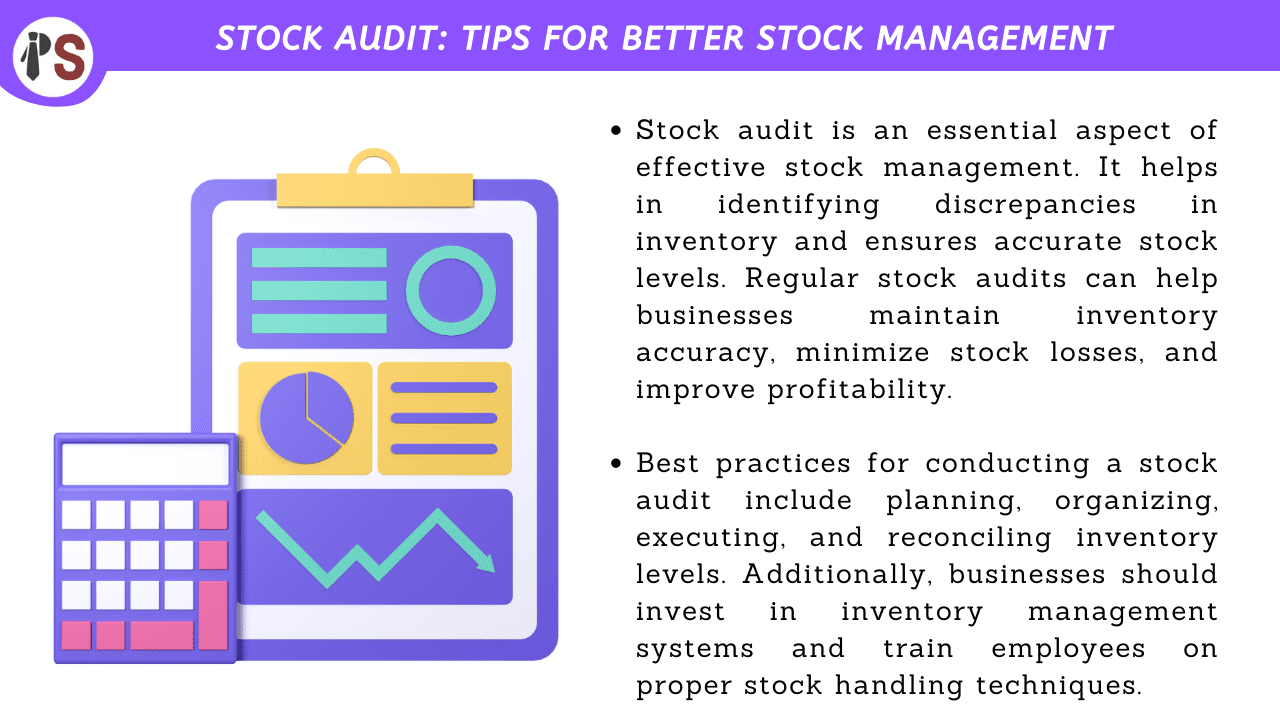
Proper stock management is crucial for any business that deals with physical goods. It can directly affect the profitability and sustainability of your business. One important aspect of stock management is conducting regular stock audits. In this blog post, we’ll discuss what stock audit is, its importance, and tips for conducting a successful stock audit.
A stock audit is a process of verifying the quantity and value of the physical stock available in a business. It involves physically counting the stock and reconciling the count with the records maintained in the inventory system. The purpose of a stock audit is to identify discrepancies between the physical count and inventory records, which can result from theft, damage, misplacement, or inaccurate recording.
Stock audit is important for several reasons, including:
Identifying discrepancies: A stock audit helps to identify any discrepancies between the physical stock and inventory records. This enables you to take corrective action to resolve any discrepancies and prevent them from happening again in the future.
Reducing inventory costs: An accurate inventory count can help reduce inventory costs by preventing overstocking or stock shortages. This ensures that you have the right amount of stock to meet customer demand and prevent unnecessary storage costs.
Ensuring compliance: A stock audit can help ensure compliance with legal and regulatory requirements related to inventory management, such as tax regulations, import/export regulations, and product safety regulations.
Plan the audit: Before conducting a stock audit, it’s important to plan the process. This involves determining the scope of the audit, selecting the audit team, setting a schedule, and preparing necessary tools and equipment.
Count the stock: Physically count the stock and record the count in a standardized format. Use a counting tool, such as a barcode scanner or RFID reader, to ensure accuracy and speed up the counting process.
Reconcile the count: Compare the physical count with inventory records and identify any discrepancies. Investigate the cause of discrepancies and take corrective action to resolve them.
Evaluate the inventory system: Evaluate the inventory system and identify any weaknesses or areas for improvement. This may involve improving the accuracy of record-keeping, implementing a better tracking system, or updating the software used for inventory management.
Analyze the results: Analyze the results of the stock audit and use the findings to make informed decisions about stock management. This may involve adjusting inventory levels, improving supply chain processes, or implementing new procedures to prevent future discrepancies.
In conclusion, stock audit is an essential part of effective stock management. By conducting regular stock audits, you can ensure the accuracy of inventory records, reduce inventory costs, and ensure compliance with legal and regulatory requirements. Follow the tips outlined in this post to conduct a successful stock audit and improve your stock management practices.
At Professional Saathi, we offer a range of business consultancy services that help businesses improve their performance, achieve growth, and overcome challenges.
Copyright 2025 © Created By KTPG PROFESSIONAL SAATHI CORPORATE CONSULTANT PRIVATE LIMITED, All Rights Reserved.
Leave Your Comment